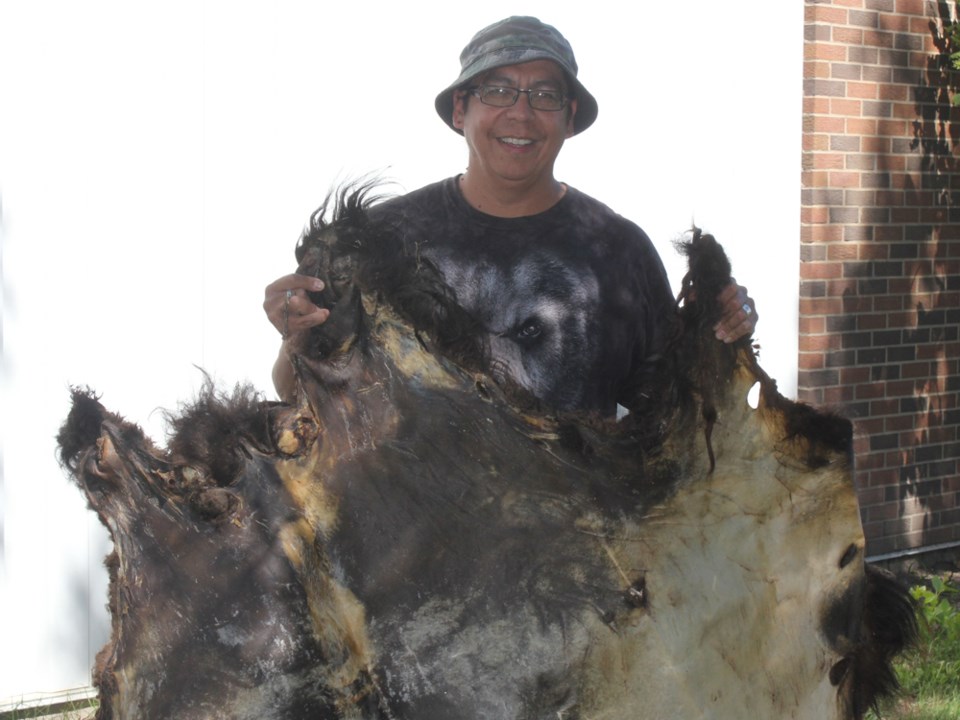One of the many cultural activities in Estevan during the 2016 Saskatchewan Summer Games this week features the unique and ancient First Nations art form of buffalo hide tanning.
Lorne Kequahtooway from Regina performed buffalo hide tanning workshops at the Estevan Art Gallery and Museum (EAGM) from July 25 to 29. Kequahtooway demonstrated the technique, and encouraged people who attended to try it themselves.
“It entails taking a fresh hide, stretching it out, lifting it up, and then starting to scrape the fat and the membrane off of it,” Kequahtooway told the Mercury. “And then, depending on how good the hair is, we might flip it over and start scraping the hair.”
He also brought a hide that he has been processing. If he has enough time, Kequahtooway will use another ancient art process of brain tanning and using smoke for the hide.
After he arrived in Estevan on July 25, he set up the frame for the hide, and then mounted and stretched it. Then he began the fleshing process, which can take a day or two.
Kequahtooway wants the public to get involved with the process, although he cautioned people it can get messy.
“What I find is when people get involved, and it’s interactive, they seem to learn more, and it resonates more within their psyche,” said Kequahtooway.
If people help with the tanning, then it saves him time. But he also encourages people to come and take a look, even if they only have a few minutes.
“It’s about me sharing these teachings,” said Kequahtooway. “If you want to be involved, that’s great. If not, I can go speak about it, and you’ll learn just as much.”
Kequahtooway was interested in tanning buffalo hides for a number of years, but it took him a while to find an instructor. When he did learn, he understood why people are reluctant to teach it, because it’s hard work and time-consuming.
“Once I learned, I thought I’d like to show this to other people so that they can see what we did as a culture hundreds of years ago – how we survived and how we lived,” said Kequahtooway. “Life was never easy.”
First Nations people used the hides to make teepees. It would take 14 hides to create one teepee, and there would be around 10 teepees per settlement.
“That’s a lot of work, when you think about it,” said Kequahtooway.
People are usually very receptive and supportive of his workshops. They appreciate that Kequahtooway is willing to share this component of First Nations culture.
Residential school survivors, who never had the opportunity to learn about their own culture when they were younger, are particularly grateful.
“They had never seen it in all their lives,” said Kequahtooway. “So, if there’s someone who is 60 or 70 (years old) and hasn’t seen it, and then there’s me, a young guy to show it to them, it’s very humbling.”
Armand McArthur, an elder from the Pheasant Rump Nakota First Nation, joined Kequahtooway for a pipe ceremony on July 26, and will be present for a closing Sharing Circle on July 29.




